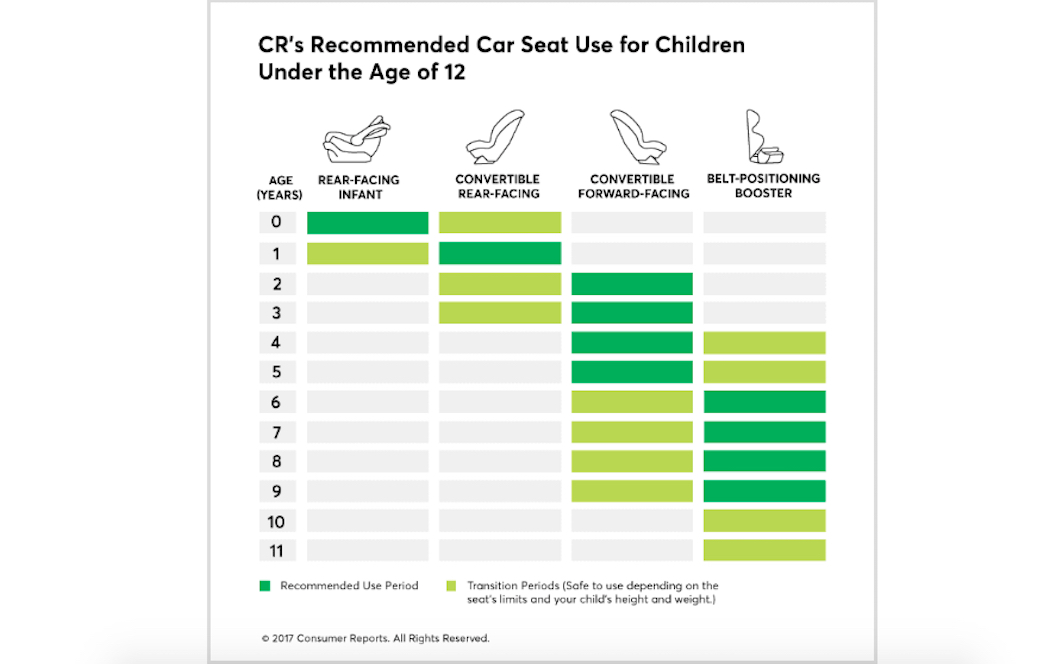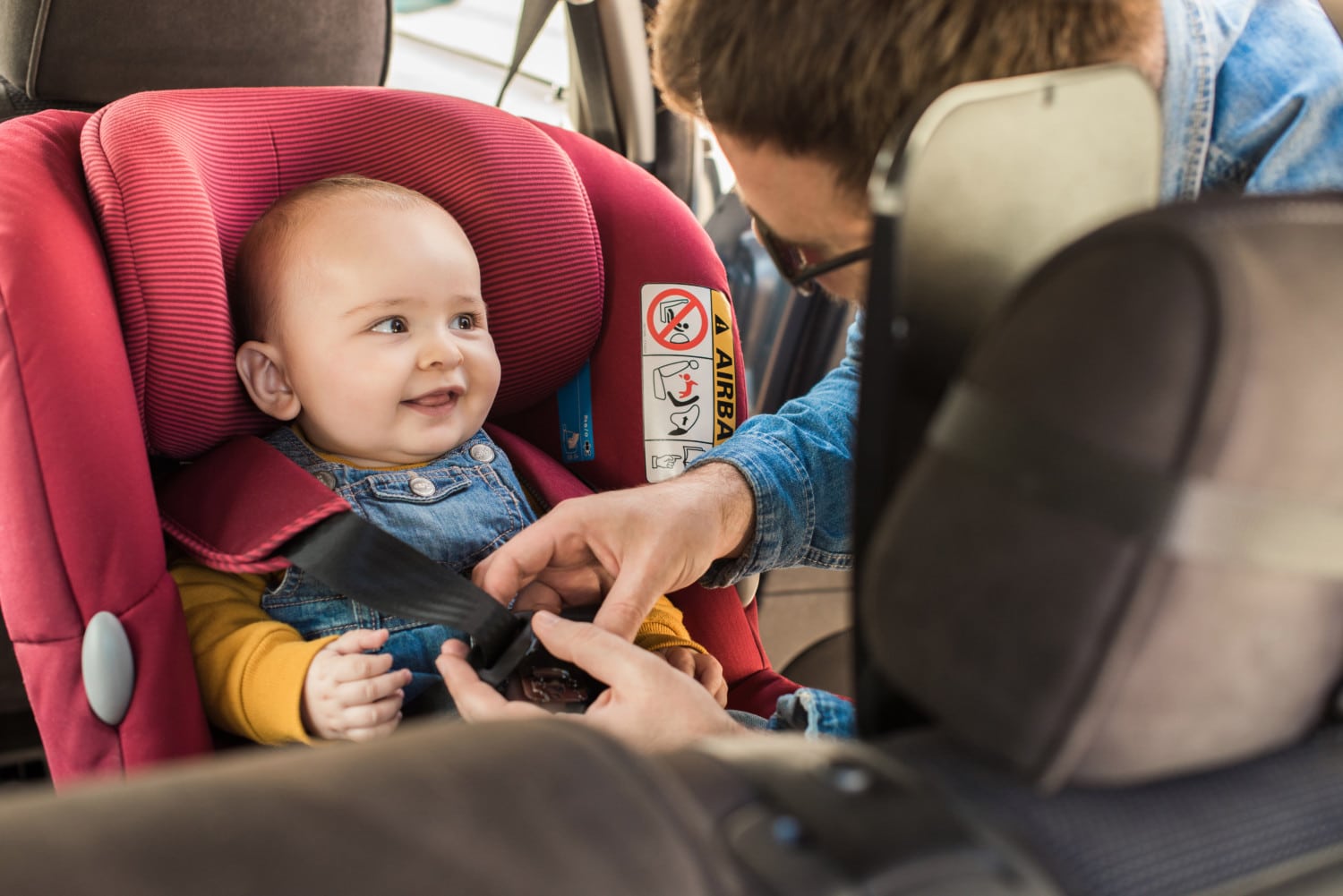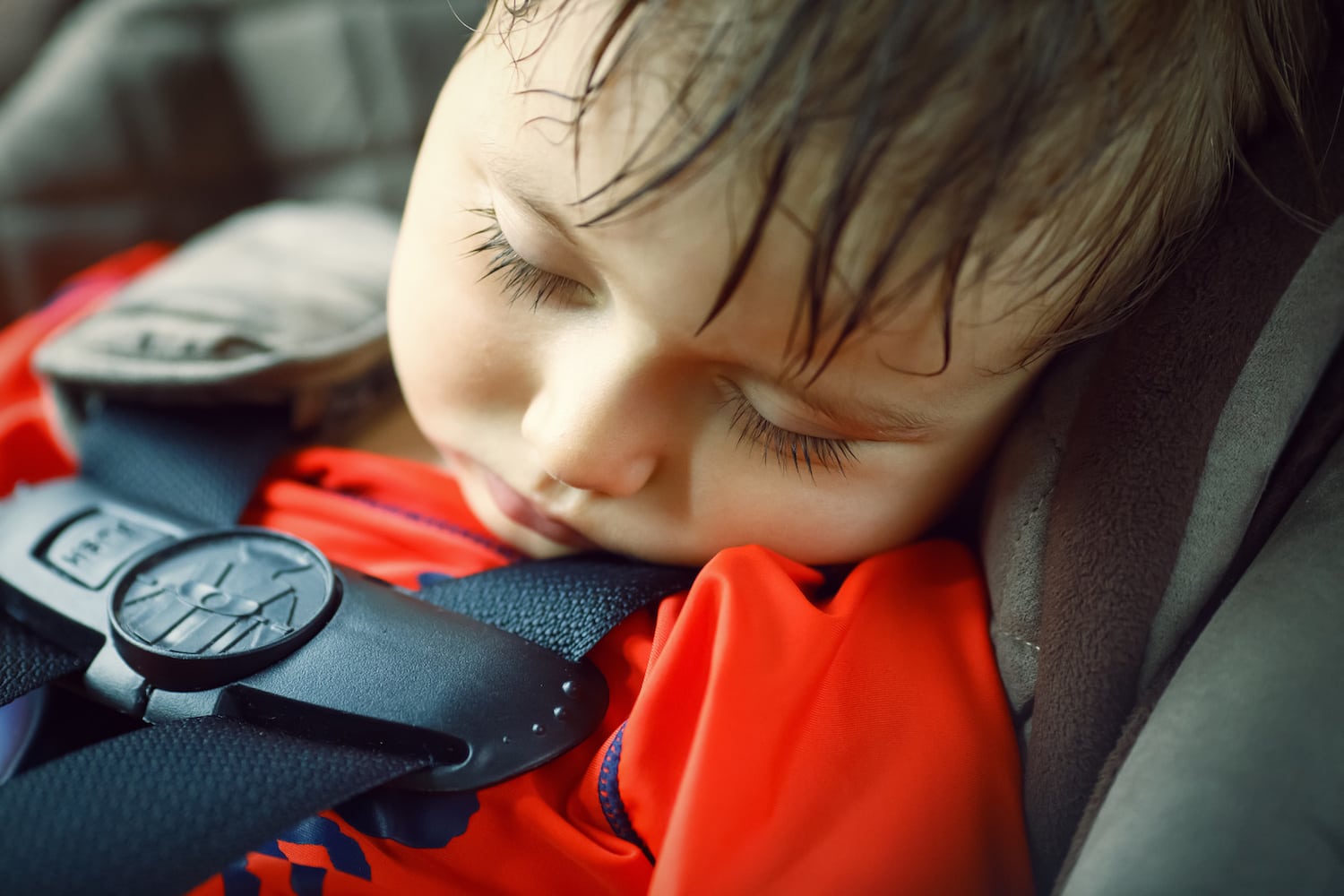There’s a ton of education that comes with being a new parent, and figuring out infant car seat safety is a big piece of it. Luckily, Consumer Reports has broken it down for us with a chart that shows the best car seat for children at every age.
In addition to the recommended car seat type by age, the Consumer Reports chart also shows how long your kid might be in a certain car seat, and also the transition periods between car seats because of fluctuations in height and weight. It’s handy to have, as it can be difficult to figure out whether what we’re doing is right or wrong.
Here’s the chart Consumer Reports published to illustrate proper car seat positions and types:

You’ll want to check your car seat’s guidelines for its weight and height limitations. And in addition to height, weight and age, behavioral and health issues can also be a factor when it comes to choosing car seat size, as more support may be needed for children with special needs. Finally, be aware that it might be tricky getting your car seat installed properly. Seats should not move more than an inch on either side.
The National Highway Traffic Safety Administration says nearly 90% of infant car seats and booster seats are misused or not properly installed. That is a HUGE percentage! To help decrease that number, the NHTSA has a list of locations where you can get car seat inspections. Your local fire station may be one of those places.

It’s so important to keep your baby safe in his or her car seat. In a rear-facing installation, make sure the harness straps are at or below the shoulders of the baby. If the seat is forward-facing, the straps should be at or above the baby’s shoulders.
Make sure the chest clip is always at armpit level. If the child is in the harness in the proper fashion, you won’t be able to pinch any fabric on the straps at the child’s shoulders, Consumer Reports says.

When you do a final check, make sure the recline angle for your rear-facing infant seat is OK. You don’t want the baby’s head to fall forward or for them to have any problems breathing.
Once your kid is secure and you’re ready to roll, your next concern may be whether they’re old enough to try escaping from their car seat. If you need ideas for that, here are 11 clever tricks to keep kids buckled.
This story originally appeared on Simplemost. Checkout Simplemost for additional stories.


